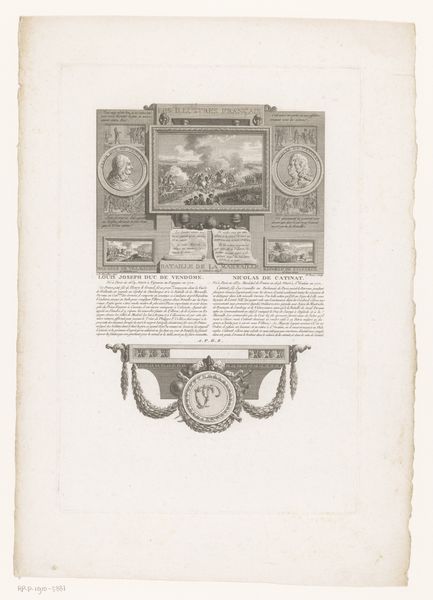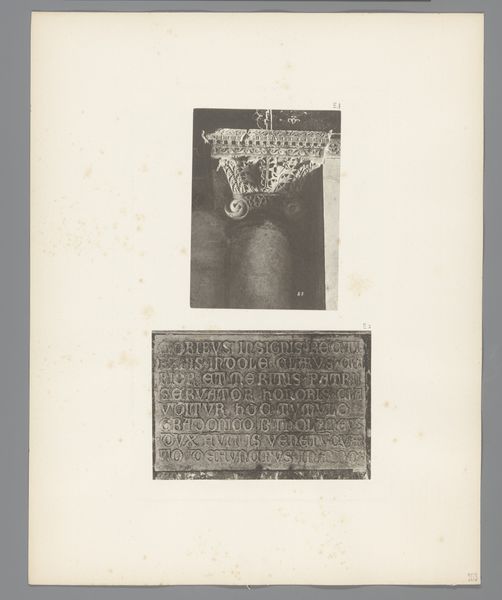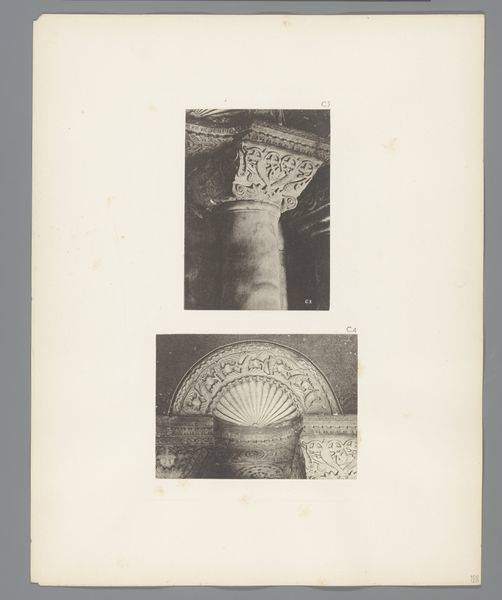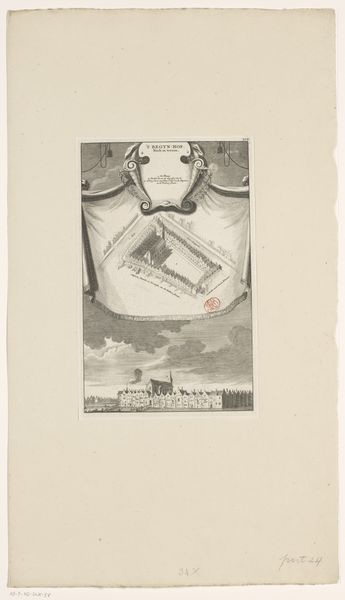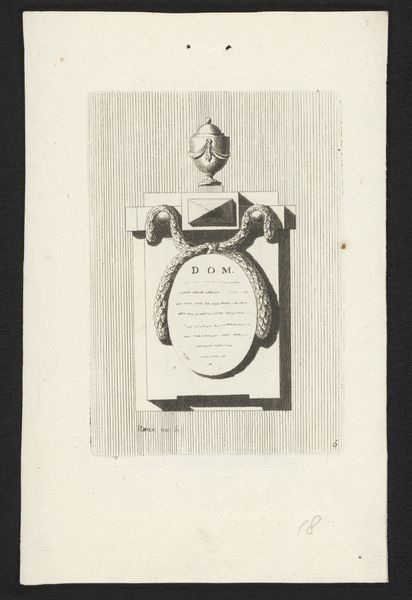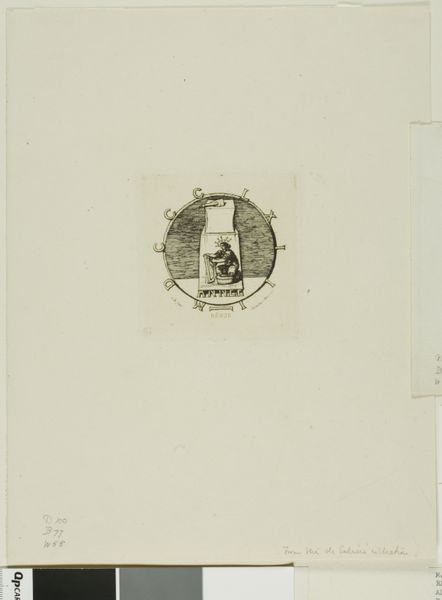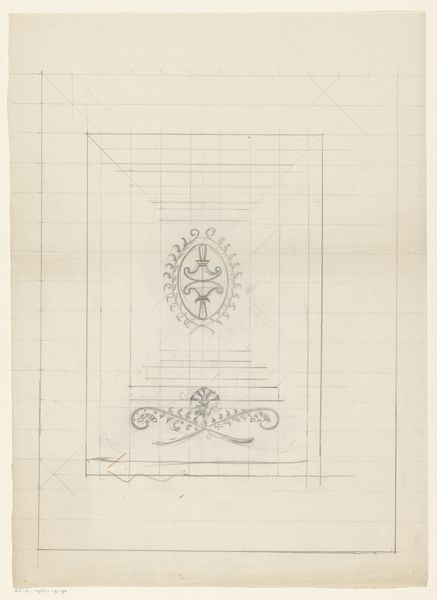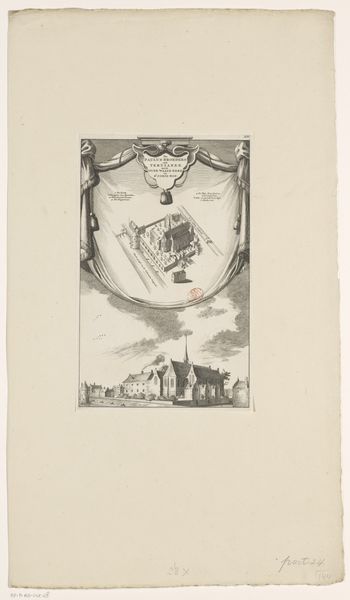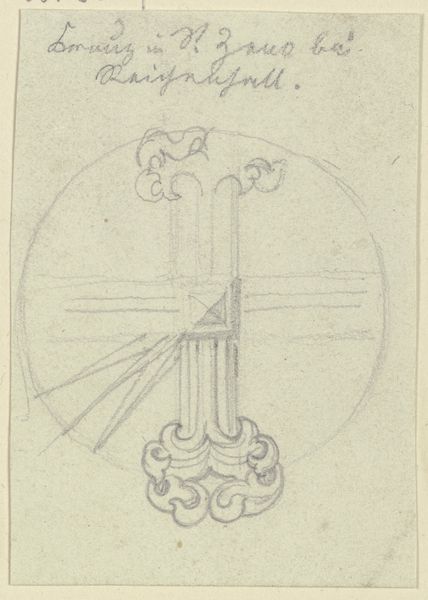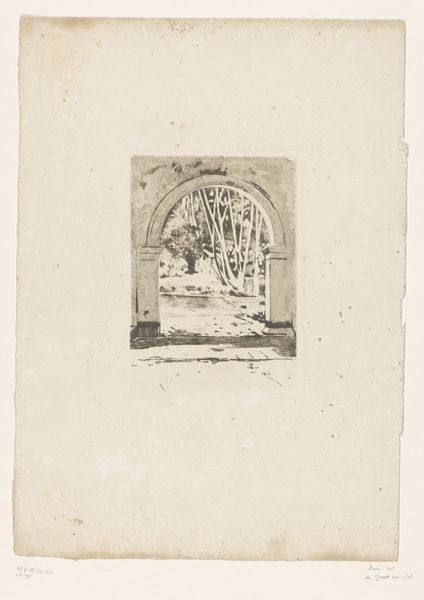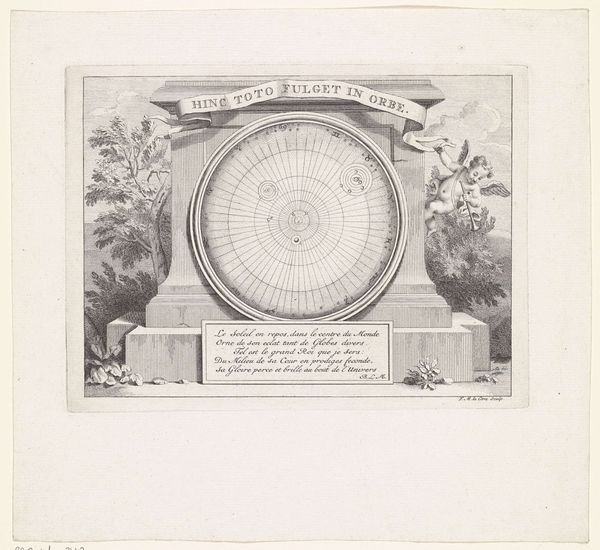
Plattegrond van de Engelenburcht en Engelenbrug te Rome c. 1756 - 1757
0:00
0:00
print, etching, engraving, architecture
#
baroque
#
ink paper printed
# print
#
etching
#
old engraving style
#
form
#
geometric
#
line
#
cityscape
#
engraving
#
architecture
Dimensions: height 350 mm, width 235 mm
Copyright: Rijks Museum: Open Domain
Curator: Take a look at this detailed print, "Plattegrond van de Engelenburcht en Engelenbrug te Rome" by Giovanni Battista Piranesi, dating back to around 1756-1757. It's a beautiful etching, engraving, and print made with ink on paper, currently held in the Rijksmuseum. Editor: It feels so precise. There's something cold and clinical about this bird's eye view of Rome, but also a distinct elegance in the line work. Almost sterile in its clarity. Curator: Precisely! As a Baroque cityscape, the geometric shapes and meticulous lines, show a fascinating relationship between the ideal form and actual, lived urban environments. Piranesi here used the print medium to dissect and study a critical point of civic infrastructure and historical power. Editor: I am stuck on that precision of line; that cool greyscale rendering has an imposing presence. Even removed from color, there is so much depth through his deliberate placement of lines. How might printmaking enable his detailed depiction? Curator: Think of the labour involved! Piranesi could mass produce and circulate images like this. Further, we can consider this in the context of the Grand Tour. This becomes a take-away product for wealthy Europeans who might marvel at Roman engineering. In other words, he is documenting culture as product. Editor: And, isn’t that tension, between culture and product, the very reason we are still so compelled by this work? Piranesi directs our attention toward form, a foundation of visual and societal order. Even though the forms are of a 'real' location, Rome. It gives the Eternal City almost an ephemeral aura. Curator: Perhaps ephemeral yet, he also emphasizes the material reality of its production. He, an artist, a producer. This work a confluence of hand craft and early mass production. I think Piranesi, working within the means of print, exposes the mechanisms and networks of artistic production. Editor: Ultimately, it brings into focus a timeless consideration within artmaking. Whether we choose to dive into form, as encoded language, or acknowledge the role of the means, media, and moment of production. There's always an open relationship to unpack! Curator: True. In his map-making Piranesi reminds us how complex the relationship between the world and how we depict it remains.
Comments
No comments
Be the first to comment and join the conversation on the ultimate creative platform.

